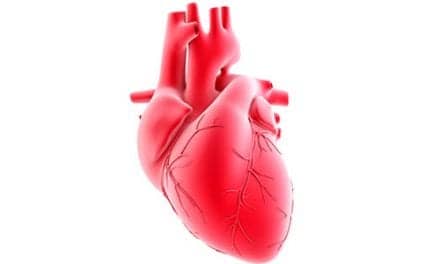Respiratory compromise is the second leading avoidable patient safety issue in the US, with more than 60% of arrests classified as potentially avoidable.
By Greg Thompson
Respiratory care in the ICU setting is largely an exercise in taking care of patients who are on mechanical ventilation. Once in the critical care environment, RTs and pulmonologists seek to detect complications and prevent further damage via sophisticated monitoring.
The stakes are high, with respiratory compromise cited as the second leading avoidable patient safety issue in the United States, with more than 60% of arrests classified as potentially avoidable. With a long list of risks and causes, including opioid sedation, patient-monitoring technology is providing a safety net for critical care patients at risk of respiratory compromise.
Kenneth Miller, MEd, RRT-ACCS, NPS, AE-C, has spent most of his 46-year career in critical care medicine where he’s observed that the “highest risk of hypoxemia is respiratory failure, and part of that compromise is patients with acute and chronic lung decompensation.” As an educational coordinator and wellness champion at Lehigh Valley Health Network (LVHN), Allentown, Pa, many of his cases involve patients with acute respiratory distress syndrome (ARDS), an umbrella term that includes trauma, as well as viral and bacterial pneumonia.
“We’re a level one burn center so we get inhalation injuries,” Miller said. “We have a lot of surgical patients who don’t do well because of sepsis or postoperative respiratory failure secondary to things like fluid overload. There are also patients who have hemodynamic instability who require mechanical ventilation, patients who have cardiac arrest, congestive heart failure, and some who have overdosed.”
Miller identifies the biggest warning signs for potential respiratory compromise as elevated end-tidal CO2 and decreased SpO2. As a result, all ventilated patients and many non-ventilated patients at LVHN are monitored in the ICU to account for these crucial measures. One of the keys to proper monitoring is a prevention mindset. “All monitoring, whether it’s oximetry, end-tidal CO2, or alarms on a ventilator should be set to alert clinicians to changes in clinical status, and to maintain patient safety,” Miller explained. “All our patients on mechanical ventilation are monitored for oxygen saturation, and they all have end-tidal CO2 monitoring in place.” Monitors allow clinicians to change the intervention before patients deteriorate. If end-tidal CO2 is rising, for example, Miller heeds the alarm and does not wait. “Be proactive instead of reactive,” he said.
Failing to use monitoring altogether is less common, but Genoveffa Devers, DNP, MSHA, RN, CPHQ, vice president of Clinical and Strategic Alliances, Nihon Kohden, Irvine, Calif, contends that there is a tendency to under utilize respiratory monitoring within many departments. “The biggest misconception tends to be that certain patients do not need respiratory monitoring because they are having simple procedures or have been stabilized and are doing well,” she said. “We know that respiratory distress can come on with little warning, especially if patients are under anesthesia or on opioids.”
Devers has also seen RTs who believe it’s only appropriate to conduct capnography monitoring on intubated patients. “This isn’t true,” she explained. “Nonintubated patients who are on opioids should be monitored because of the risk for respiratory depression. The Life Scope OLG-3800 offers the ability to monitor these patients.” The Life Scope OLG-3800 capnography monitor offers mainstream capnography for intubated and nonintubated patients. Mainstream technology measures directly at the point of expiration, providing what Devers calls a faster and more effective measurement of CO2. “In a study by Kasuya, et al, mainstream capnography performed better than sidestream,” she said, “even when an oral guide was used with sidestream monitoring.”
The Life Scope OLG-3800 can also be used to monitor respiratory rate, CO2 partial pressure, end-tidal CO2, and can produce an audible alarm when a measured physiological rate—such as respiratory rate, falls outside present limits or when a technical error is detected. “This makes it ideal to help detect and prevent respiratory compromise during anesthesia/respiratory care, PCA or opioid use, procedural sedation, or cardiopulmonary resuscitation,” Devers added.
Karen LaRoché, RRT-ACCS routinely monitors patients after sedation and when a procedure is finished to ensure proper respiratory drive. Earlier in her career, she often used end-tidal CO2 for conscious sedation, but also for trauma patients who were intubated. “We used it as one of the many ways to look at adequate resuscitation in the ER and how well they were profused in the field,” said LaRoché, a clinical specialist at MultiCare Health Systems, Puyallup, Wash. “The correlation being the lower the number, the worse the outcome.”
After more than two decades in the respiratory field, LaRoché wishes more departments would adapt and use end-tidal monitoring, which she regards as a “valuable tool,” particularly when added to other assessments. “I think end-tidal is under-utilized, practically speaking, in the general patient care setting,” she said. “However, it’s also expensive. The little handheld devices are quite costly, and it’s expensive to get it integrated into ventilators and other pieces of equipment. “I would love to see it [end-tidal] become the base standard for ICU monitors or crash cart monitors,” she continued. “When directors see the price they say, Let’s just order one or two, when really the value of it is completely related to accessibility. If it’s hard to find, it decreases the usage, and then people don’t learn what the value could be clinically for patients.”
LaRoché maintains that the traditional view of end-tidal CO2 is ultimately too limited. “When you think of end-tidal CO2, you only think of equating it to a patient’s arterial CO2,” she explained. “There is some value there, but accuracy depends on how well patients are profused. If people understand that correlation, then they can understand that it’s not just about answering the question; Is my patient breathing? It’s also about how much blood patients have flowing around their body. Both of those things must work together to decrease the chance of respiratory failure.”
Even among experienced RTs, the blood flow question is one of many elements that may need clarification. “There is also a misunderstanding that if a person’s oxygen saturation is okay, then the patient’s full respiratory status must be fine,” LaRoché added. “That’s actually where monitoring of end-tidal CO2 is helpful. Respiratory failure is two sides of a coin. One is an oxygenation issue and one is a ventilation issue. Pulse oximetry only addresses the oxygenation issue.” LaRoché points out that the ubiquitous pulse oximetry “does not address the ventilation issue,” and that’s where end-tidal really comes into play. “It gives you a way of monitoring both sides of that coin,” she said, “so that you can make much faster interventions and assessments of what’s going on with patients.”
Paul F. Nuccio, MS, RRT, FAARC agreed with LaRoché about the limitations of pulse oximetry, contending that a lack of understanding over the years has led to a lot of errors. “People were never really educated properly,” said Nuccio, a member of the RT magazine editorial advisory board and a former director of Pulmonary Services at Brigham and Women’s Hospital in Boston. “They are relying on oximeters as a stand-alone monitoring device without taking other variables into consideration.”
Specifically in hospital critical care units, healthcare professionals “tend to over-oxygenate patients,” at least in some cases. As a result, Nuccio said, “You have patients on fairly high levels of oxygen in ICUs and their pulse oximetry sometimes will read 99 or 100%, which according to the textbooks is perfectly normal.”
The problem is it can’t go over 100%, and the high reading can lead to clinical conundrums. “If patients begin to deteriorate, it’s very possible that it’s going to take a long time for that monitor to indicate a problem,” said Nuccio. “A typical pulse oximetry alarm might be set at 90%, but it could take minutes before that pulse oximetry actually drops. If you’re using oximetry in conjunction with capnography devices, you would identify problems much sooner, because as soon as capnography no longer detects CO2 being exhaled, it will set off an alarm. That will occur long before the oximetry alarm ever goes off.”
To bridge the knowledge gap, Nuccio believes RTs have an obligation to educate people (even physicians) on the proper use of capnography, particularly how it can be used in conjunction with other technology. “I don’t want to make it sound like I’m negative on pulse oximetry, because that’s a phenomenal piece of equipment,” he said. “I don’t think either one of these devices should be used separately. I think they should always be used together.”
Tech Solutions in the ICU
Within acute care settings, RTs have more high tech choices than ever. A Philips software platform for inpatient population management (eCareManager Enterprise Telehealth) provides actionable insights with clinical decision support that fosters care coordination.
“The software platform underlies the Philips eICU Program, which powers the nation’s largest tele-ICU network of providers,” said Adam Seiver, MD, PhD, medical leader, Therapeutic Care and Hospital Respiratory Care, Philips. “The eICU technology brings together people, process, and technology—driving benefits to patient care. Predictive AI-enabled algorithms such as Sentry Score highlight changes in patient cardiovascular and respiratory systems, identifying patients with the highest probability of requiring an intervention in the next 60 minutes.”
As bed availability and critical decisions on patient throughput are required, eCareManager integrates its Clinical Performance Applications Suite via a Discharge Readiness Score. “The score is a predictive algorithm that provides clinicians objective scoring on a patients risk of death or readmission within 48 hours of a planned discharge,” Seiver explained.
Keeping patients out of the ICU is the goal of Philips’ EarlyVue VS30, a general care patient monitor. “This newly released vital signs monitor leverages the power of early detection and intelligent intervention with automated Early Warning Scoring [EWS],” Seiver said. “EWS helps clinicians quickly pinpoint subtle signs of patient deterioration, and confidently deliver proactive care.”
Jonathan D. Finder, MD, pulmonologist at Le Bonheur Children’s Hospital, Memphis, Tenn, shared Seiver’s prevention concerns. As an expert in home monitoring, Finder has consulted via telemedicine more than ever, particularly in light of the global pandemic. The experience has only solidified his desire to get better monitoring in the home setting. “If families had a home CO2 monitor, I would be much more comfortable to say, ‘Your ventilation is great,'” Finder said. “It would have been so much easier for me had we been able to get that kind of data from our visits, so I could say, ‘Your CO2 level is 32. We can change this on the vent settings.’ But I don’t have that because I can’t get that CO2 monitor at home.”
Ultimately, all the sophisticated monitoring technology requires a human element. Kenneth Miller summed it up. “Remember, the monitor is only as good as the individual who sets it up,” he said. “The monitor relies on skilled operators to put in the correct information and to correctly set the parameters. The monitor does not replace good clinical assessment. The monitor is an adjunct to the clinician. It does not replace the clinician.”
RT
Greg Thompson is a contributing writer to RT. For more information, contact [email protected].










